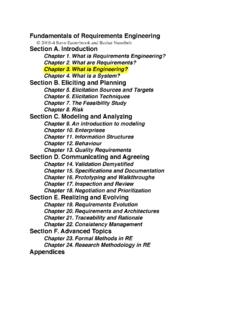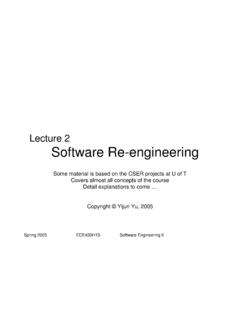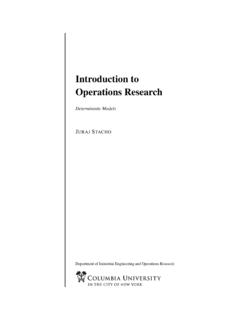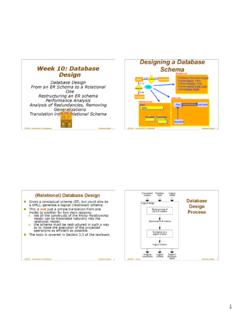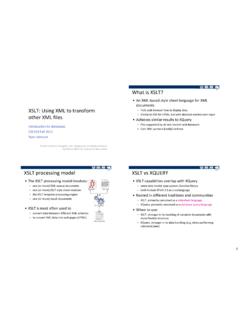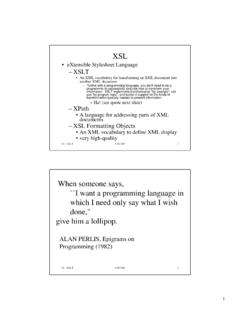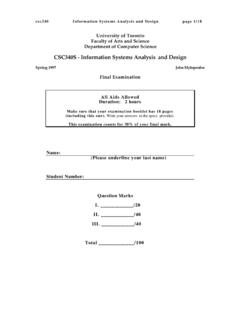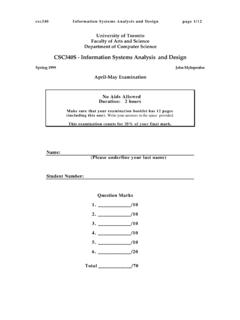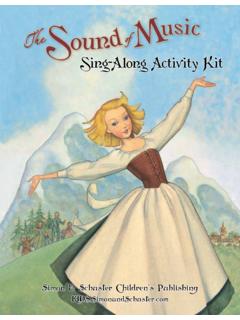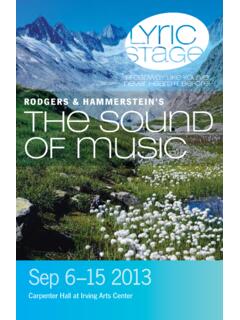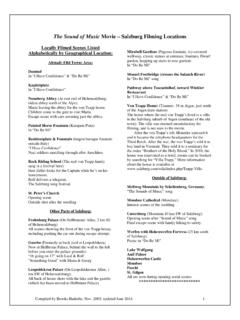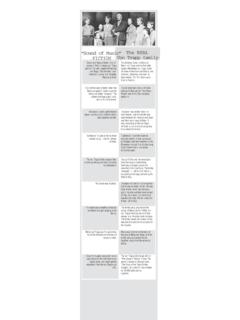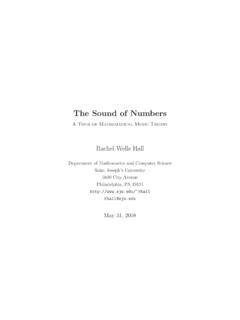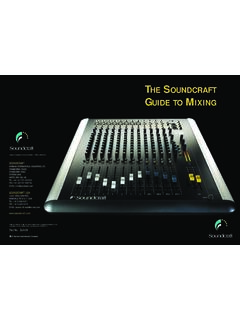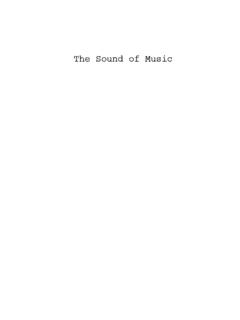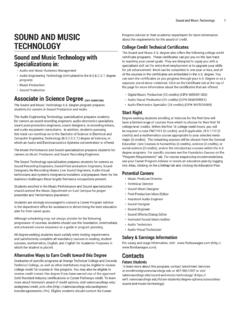Transcription of What Is Sound? - University of Toronto
1 What Is Sound? sound is a pressure wave which iscreated by a vibrating vibrations set particles in the sur-rounding medium (typical air) invibrational motion, thus transportingenergy through the the particles are moving inparallel direction to the wave movement,the sound wave is referred to as alongitudinal result of longitudinal waves is thecreation of compressions andrarefactions within the alternating configuration of C andR of particles is described by the graphof a sine wave (C~crests, R~troughs)The speed of a sound pressure wave in air + m/s , Tc temperature in CelsiusThe particles do not move down the waywith the wave but osciallate back and forthabout their individual equilibrium amount of work done to generate the energy that sets the particlesin motion is reflected in the degree of displacement which is measuredas the amplitude of a frequency f of a wave ismeasured as the number of completeback-and-forth vibrations of a particleof the medium per unit of Hertz = 1 vibration/secondf = 1/TimeDepending on the medium, soundtravels at some speed c which definesthe wavelength l: l = c/fWavelength, Amplitude, Frequency of a WaveMeasuring the Intensity of sound The softest audible sound modulates the air pressure by around 10-6 Pascal (Pa).
2 The loudest (pain inflicting) audible sound does itby 102 Pa. Because of this wide range it is convenient to measure sound amplitude on a logarithmic scale in Decibel [dB]. Decibel is not a physical unit - it expresses only a ratio for comparing the intensity of two sounds: 10 log10 (I/Io) where Iand Io are two intensity/power levels (I~P2 , P is sound pressure) One can say a channel is amplifying the sound by 3 dB, meaningthe output is 3 dB louder than the input. In order to make it interpretable as a real unit, a fixed pressureP0 = 2*10-5 Pa is defined (the reference of 0db corresponds tothe threshold of hearing) and the absolute sound pressure P inDecibel is defined as: 20 log10 (P/P0) Thus +20 dB means an increase in pressure by a factor of 10 Threshold of hearing 0 dBsoftest audible 1000 Hz sound 6 dBquiet living room 20 dB soft whispering 25 dBrefrigerator40 dBsoft talking50 dBnormal conversation60 dB busy city street noise70 dBpassing motorcycle90 dBsomebody shouting100 dBpneumatic drill100 dBhelicopter110 dBloud rock concert110 dBair raid siren130 dBpain threshold120 dBgunshot140 dBrocket launch180 dBExamples for sound Levels in DecibelInstant perforation of eardrum 160 dB1) TOH.
3 One-billionth of a centimeter of molecular motion2) The most intense sound (without physical damage) is one trillion times more intenseHumans vs Machines on similar tasks (2001)TasksVocabularyHumansMachinesConne cted letters261%5%Spontaneous with clean with noisy speech(10db SNR) speech based ontrigram Humans are at least 5 times better than machines, and far more robust In the last experiment humans and machines have the same syntactic andsemantic model > the difference disappears (Experiments by Microsoft, 2001)
